How Lloyd Wright's Infamous Sowden House Might Be Connected to the Unsolved Black Dahlia Case
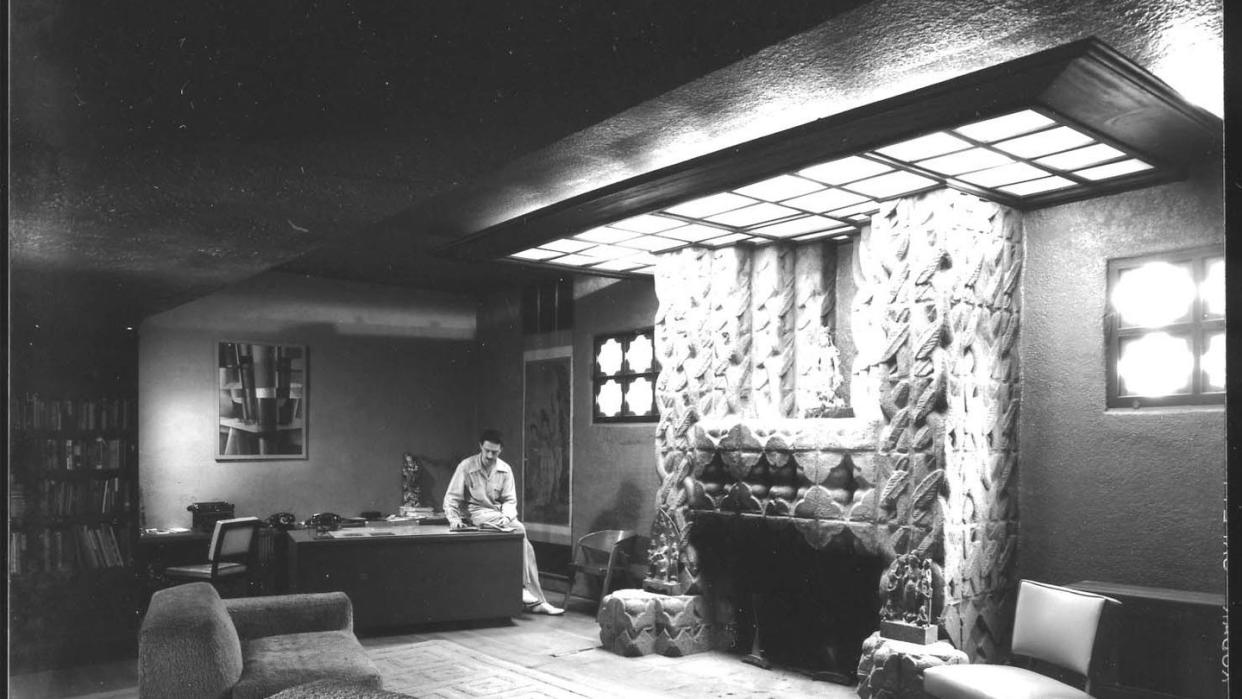
- Oops!Something went wrong.Please try again later.
- Oops!Something went wrong.Please try again later.
- Oops!Something went wrong.Please try again later.
- Oops!Something went wrong.Please try again later.
"Hearst Magazines and Yahoo may earn commission or revenue on some items through these links."
The full story of the Sowden House is featured in season 3 of House Beautiful's haunted house podcast, Dark House. Listen to the episode here.
Towering over Franklin Avenue at the bottom of the Los Feliz foothills looms one of the most unusual and mysterious marvels in Los Angeles: A Mayan Revival home designed by Frank Lloyd Wright Jr., the son of the legendary architect Frank Lloyd Wright. While its unique architectural character is certainly noteworthy, arguably the most interesting thing about the home isn't necessarily the block-style facade, which was inspired by the menacing yet beguiling opening of a cave or an ancient tomb. Nor is it the massive garage-style window that turns the living room into an indoor-outdoor space, or even the koi pond off the primary suite.
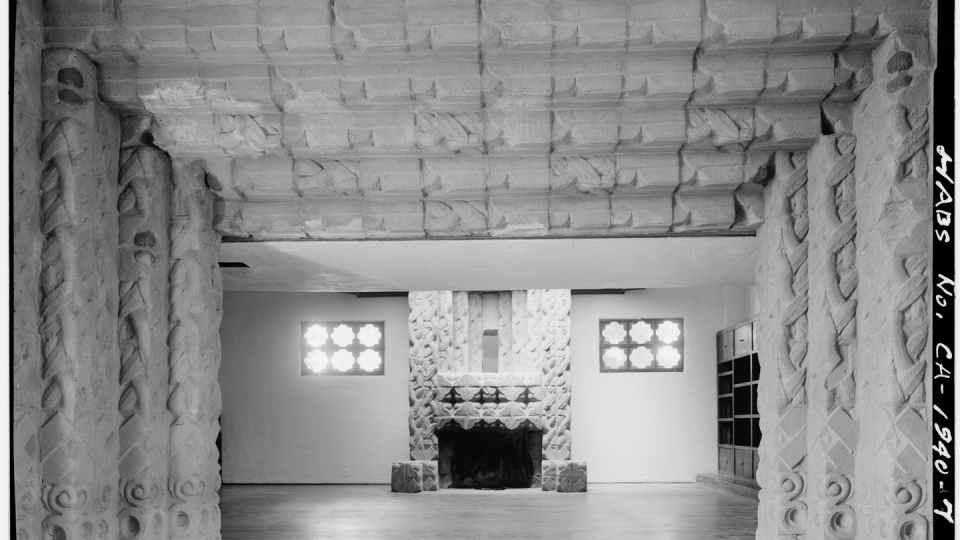
Instead, it's the home's history, which captures both Hollywood's glamorous side and its seedy underbelly. Charlie Chaplin, Cecil B. DeMille, and other VIPS are all rumored to have spent time in the home, but another fallen Hollywood hopeful (famed for reasons entirely more tragic) may have also spent time there: Elizabeth Short, aka The Black Dahlia. Keep reading to learn about the unique design characteristics and early history of the Sowden House, as well as its history as the potential crime scene of America's most notorious cold case—thanks to its former inhabitant Dr. George Hodel, one of the prime suspects in the murder of Elizabeth Short.
The Sowden House's early history and design
Up until 1924, Frank Lloyd Wright and his son were working together on projects in Los Angeles when the older Wright said, "I'm fed up here. You're young enough to take Los Angeles." Wright Jr. wanted to make a name for himself by designing Hollywood sets and evolving his father's designs by incorporating the Mayan Revival aesthetic. He hit his stride when he was commissioned to build the Sowden House in 1926 by his friend, a photographer, John Sowden.
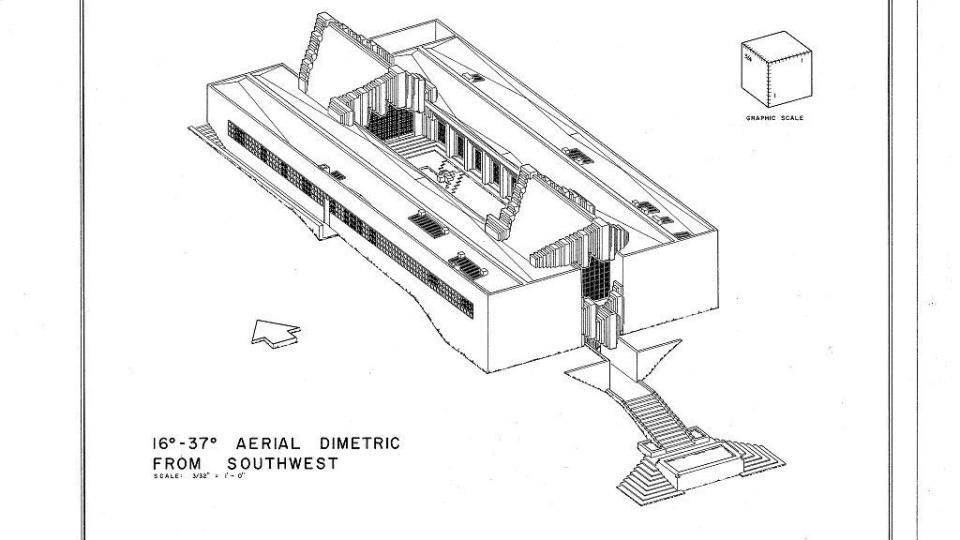
John and his wife of six years, Ruth, were moving to L.A. with their 6-year-old daughter and wanted a bohemian playhouse where they could throw parties for aspiring actors and Hollywood types. The Sowdens bought a large lot on the western edge of Los Feliz, which was home to many then-leading actors and entertainment moguls, as well as the storybook-style homes that inspired most of Walt Disney's fairytale creations. It was the perfect backdrop for Wright Jr. to design and build the 5,600 square foot, 7 bedroom, 4 bathroom structure, which is made of reinforced concrete and stucco over a wood frame.
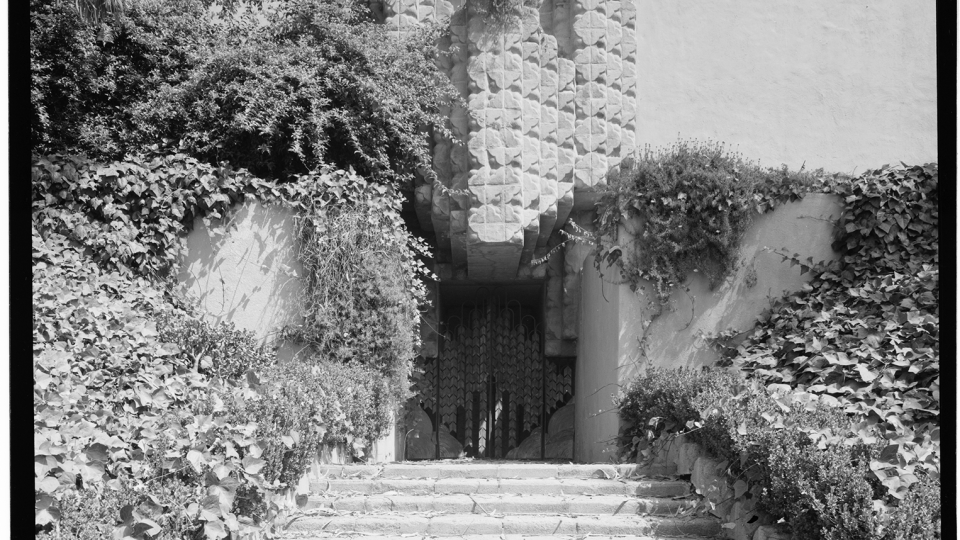
Much like the Hollywood sets Wright Jr. was known for, the facade of the Sowden House is theatrical and sculptural. Mayan Revival magnificence aside, the home is also reflective of the Art Deco movement, marked by fan-shaped motifs and Brutalist features. Aside from one large window over the French front doors, the front of the house is windowless, adding to its intimidating presence. And yet, the home is filled with light, thanks to the central courtyard the entire home is built around. Though it sounds quite complex and bizarre, the layout is actually very organized and straightforward: It's essentially a rectangle with the center cut out, and corridors on either side leading to the private rooms on the east, and the communal spaces on the west.
Despite being a professional feat for Wright Jr., the house wasn't the Sowden's home for long. Most sources report that the family left because the Mayan Revival style got too much criticism, but perhaps it was for more personal reasons. According to census records, John and Ruth were divorced by 1930, and Ruth married her second husband, David Barnett in the Sowden House, where they lived until 1936 when they sold the home to a real estate developer named Milton Blazier. Blazier rented the home to various occupants, including a silent film era child star, James W. Boudwin. However, not all Hollywood connections are so glittering; In 1945, Dr. George Hodel, one of the prime suspects in the Black Dahlia case, bought the home and moved in with his third wife, Dorothy, and their three sons, Michael, Kelly, and Steve.
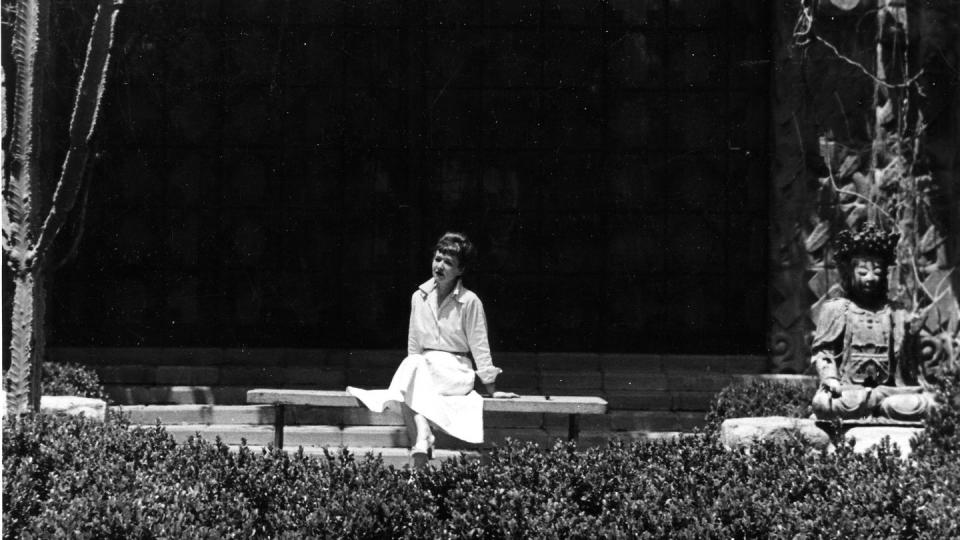
Dr. George Hodel and the Black Dahlia Case
Hodel was born on October 10, 1907, in Pasadena and was a highly spoiled only child with a soaring IQ of 186. He graduated early from high school and enrolled at Cal Tech when he was 15, though he was expelled for unknown reasons (family lore suggests an affair with a professor's wife). He pivoted to pursuing art, self-publishing a paper about the budding surrealist movement, but his art career eventually fizzled, leading him to move to San Francisco, where he dabbled in journalism. In the late 1920s, Dr. Hodel and his common-law wife Emilia had a son, Duncan, and in 1932, Dr. Hodel enrolled at UC Berkeley as a pre-med student. By the mid-1930s, he was married to another woman, with whom he had a daughter named Tamar. Around this time, he went to UCSF medical school to study surgery.
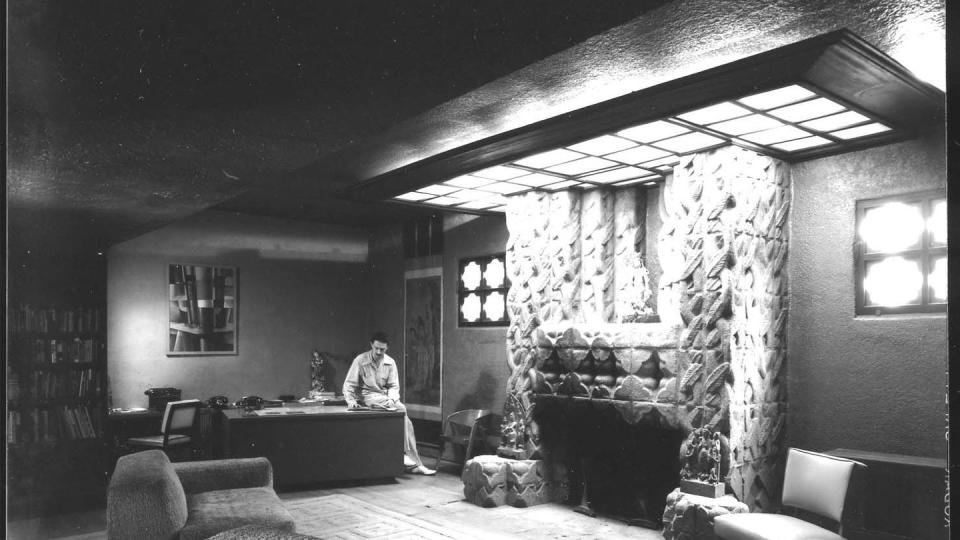
Once he graduated, Dr. Hodel divorced Tamar's mother and went to work as a surgeon at a logging camp in Arizona, but by the early 1940s, he was back in Southern California, married to Dorothy Huston Hodel, and became the head of venereal disease control for the Los Angeles County Health Department. Dr. Hodel also ran a medical practice on First Street in Downtown L.A., about a mile away from The Millennium Biltmore Hotel, which is believed to be one of the last places Short was seen alive before her brutal murder a week later in January of 1947.
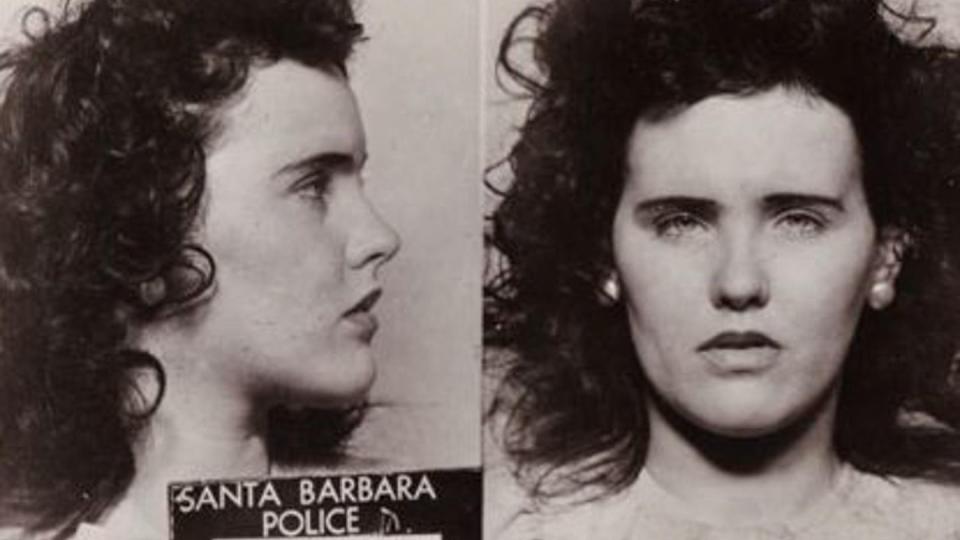
By 1946, Dr. Hodel and Dorothy were divorced, but she and their sons still continued to live in the Sowden House sporadically. That same year, he lived and worked in Shanghai, China under the title Lt. General for the UN Relief and Rehab Administration. In a letter to Lloyd Wright himself, whom Dr. Hodel was trying to recruit to work in city planning there, Dr. Hodel said he’d be in Shanghai through the spring of 1947. But by September of 1946, he had abruptly resigned for personal reasons and returned to Los Angeles.
While Short and Dr. Hodel lived near each other and ran in similar circles, he wasn't on the investigators's radars until 1949, when his daughter then 14-year-old daughter Tamar told authorities she was being sexually abused by him in the Sowden House. The authorities searched the Sowden house and seized some predatory photographs and what authorities called pornographic art objects. According to a 1949 article in the Los Angeles Mirror, Dr. Hodel claimed: "The action which I was accused of participating in is unclear, and I'm not sure if I was dreaming or if it was real, and if I was being hypnotized or hypnotizing someone else." Before he got counsel, he said, "These things must have happened." Despite the damning testimony, his highly regarded and successful lawyer Jerry Giesler helped him build a case, and Goerge was acquitted in early 1950.
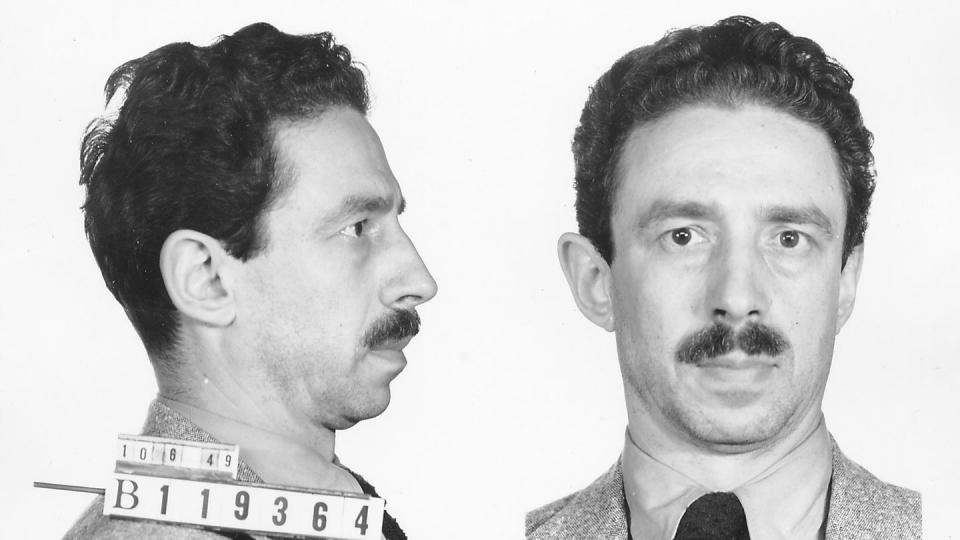
During the case, one of the witnesses, a boarder named Joseph Barrett, told Gielser that Tamar said to him: "This house has secret passageways. My father is the murderer of the Black Dahlia. My father is going to kill me and everyone in this household because he lusts for blood and is insane." This claim, along with the accusations of incest brought against Dr. Hodel, put him at the top of the lead investigator, Lt. Frank Jemison's, suspect list. In fact, Jemison ordered his squad to bug the Sowden House while he was interrogating him in 1950.
Many incriminating statements were caught on tape during the 24/7 surveillance period, and several other witnesses were interviewed to make a case against Dr. Hodel as the Black Dahlia murderer. Dr. Hodel worked hard to violently discredit all the witnesses who claimed he knew and killed Short (you can read more about it here in the letters from another detective who was sent to the Sowden House for a separate incident), but by 1951, Dr. Hodel left his family and Los Angeles behind for Honolulu. Shortly thereafter, Jemison closed the case and cleared Dr. Hodel, a decision that baffles many today given the apparent evidence against him.
According to the Honolulu Advertiser, Dr. Hodel remarried again and became a psychiatrist for the county hospital, where he worked with patients and even taught convicted killers the foxtrot. He and his fourth wife, Hortensia Starke Hodel, eventually moved to her native Philippines and had several more children before divorcing. He met his fifth and final wife, June, in Tokyo, before they moved back to San Francisco in the late 1900s. When Dr. Hodel died in 1999, June gave all of his effects to his son Steve, a retired, decorated Los Angeles homicide detective, which led Steve to find out his father was a suspect in the Black Dahlia Case Short murder. Initially hoping to clear his father's name, Steve ultimately uncovered information that convinced him his father most likely did commit the crime.
In 2003, Steve published The Black Dahlia Avenger to chronicle his findings, including eyewitness testimonies, a psychological profile, and physical evidence, such as construction work receipts still on file at the UCLA Library that match evidence found with Short's mutilated remains. The case was never solved, and researchers and historians continue to try to bring justice to Short's memory, but experts remain torn as to who the killer was, largely due to the numerous suspects, lost and tainted evidence, and the sensationalized nature of the investigation. Dr. Hodel's reputation was enough to lend the Sowden House an air of notoriety and accusations of hauntings.
The Sowden House post-1951 and today
According to a 1969 report by the Historic American Buildings Survey, the owner following Dr. Hodel's tenure was a woman who turned out to be a representative of Jerry Geisler's office—Geisler being Hodel's former lawyer. Dr. Hodel presumably put the Sowden House up as payment for the incest trial, and Giesler's office sold it to Dr. Harold Mazur in 1951, the same year Dr. Hodel fled to Hawaii. The Mazur family lived in the home until they either rented it out or let it sit empty between the 1960s and the 1980s, when one of Dr. Mazur's children moved in. For years, neighborhood residents reported that the Sowden House looked like it had fallen into disrepair, and even appeared to be abandoned.
The Mazur family eventually sold the Sowden House to a designer and developer, Xorin Balbes, in 2001. Though many of the original details have been preserved over the decades (we especially love the dramatic ceiling in the living room and the stained glass ceiling details above the fireplace), the interior has been updated to suit modern tastes. Balbes repaired the stonework, expanded the kitchen, finished the basement, and replaced the small fountain in the central courtyard with a large swimming pool. The renovation ushered in a new era of activity to the Sowden House and it's since become a popular venue for celebrity fundraisers as well as a backdrop for television, movie, and other commercial shoots (this music video for "I Dare You" by the XX is one of our favorite Sowden House sightings). Perhaps you recognize it from the TNT series starring Chris Pine, I am the Night, which was inspired by Tamar Hodel's daughter's memoir, One Day She'll Darken, and fictionalized the Black Dahlia case. If only these walls could talk.
To hear the full story of Elizabeth Short's life and death, as well as more details on the Sowden House listen to Parts I and II of the Black Dahlia series of our podcast, Dark House.
You Might Also Like

